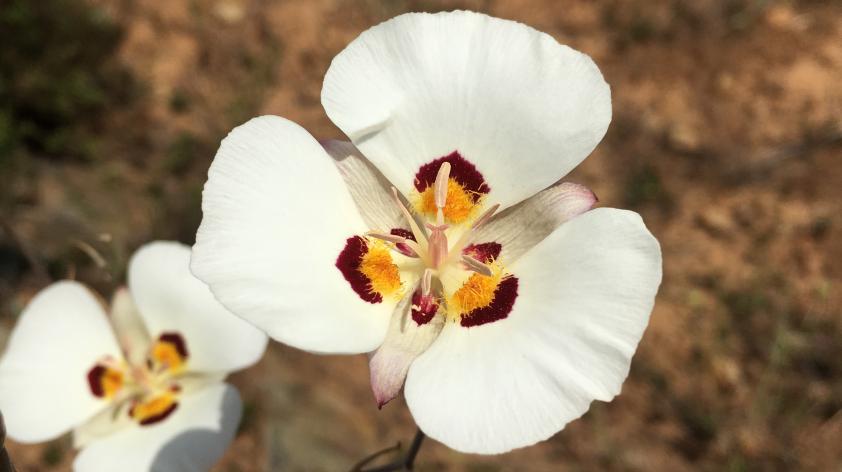
Rare Plant Seed Collections in San Diego County
This month I’ll continue discussing some of the rare plant species that we targeted in 2016 for seed collections as part of the California Plant Rescue.
Calochortus dunnii is a very rare member of the lily family. Known as Dunn’s mariposa lily, this plant can only be found in San Diego County and northern extents of neighboring Baja and is considered threatened with extinction. The species is a perennial bulbiferous herb, meaning it regrows from a bulb each year and dies back at the surface at the end of each season. It is threatened by human development, invasive plant species, and potentially by harvesting from collectors. This species is very dependent upon seasonal rains. Heavy winter rains trigger the growth of leaves from the bulb, and eventually flower spikes in spring, but drought or abnormal timing of rains often result in little or no growth in a season. Instead the bulb will conserve its energy and wait for a season with better conditions. This year we met a land manager that said a population of this plant was flowering for the first time in 12 years! We were very fortunate last year that rains occurred at the right time and in the right quantity in southern San Diego County. We made seed collections from 3 separate populations, allowing us to conserve this beautiful species and help ensure it doesn’t go extinct.
Dicranostegia orcuttiana is known as the Orcutt bird’s beak. It is a very rare species, found almost exclusively in the coastal sage scrub canyons of the Otay Lakes and Tijuana River watersheds. There are 13 known populations on the planet, though it is thought there might be some unknown populations in northern Baja. This annual is hemiparasitic, meaning it steals water and nutrients from host plant roots but is not completely dependent upon the host for survival. These plants photosynthesize, harvesting sunlight for food, and studies have shown that the species is not dependent upon any other species in order to germinate, grow, and even flower given the right conditions, but might become larger and reproduce more when host plants are available. Some other members of this family (Orobanchaceae) have very specific host plants, but no studies have confirmed such specificity for the Orcutt bird’s beak, and it’s thought to parasitize common chaparral species. The largest threat to the species is human development and urbanization and the spread of non-native plants. We made 1 collection from a large population this year.
Mimulus clevelandii is Cleveland’s bush monkeyflower. While not considered in immediate danger of extinction, it’s a rare plant that has a restricted range and is considered vulnerable. It occurs as far north as the Santa Ana Mountains in southeastern Orange County, south into northern Baja. Populations are most concentrated in the area surrounding Otay Mountain. The plant is a perennial herb that spreads by rhizomes (underground stems.) Individuals my be very large underground, sending up many flower spikes in the spring, but will die off at the surface at the end of every reproductive season. Because of this growth pattern, it is often difficult to know how many individuals there are in a population. We made 2 separate collections of this beautiful plant around Otay Mountain this year.
To read my earlier posts about rare plants that we’ve conserved as participants in the California Plant Rescue click the links below:
http://institute.sandiegozoo.org/science-blog/conserving-rare-plants-otay-mountain
http://institute.sandiegozoo.org/science-blog/california-plant-rescue
http://zoonooz.sandiegozoo.org/2016/01/29/saving-san-diegos-rarest-plant-species/













